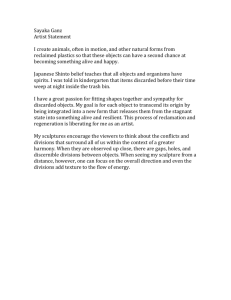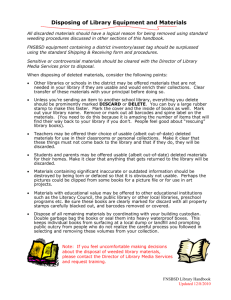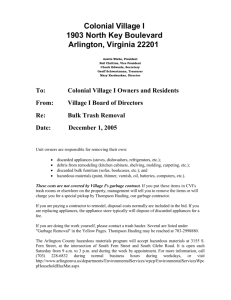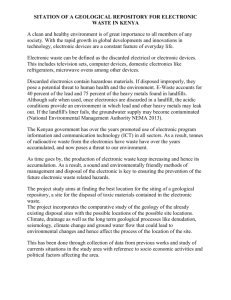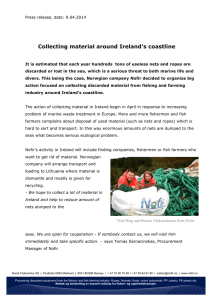PJAS 09 COSTELLO
advertisement
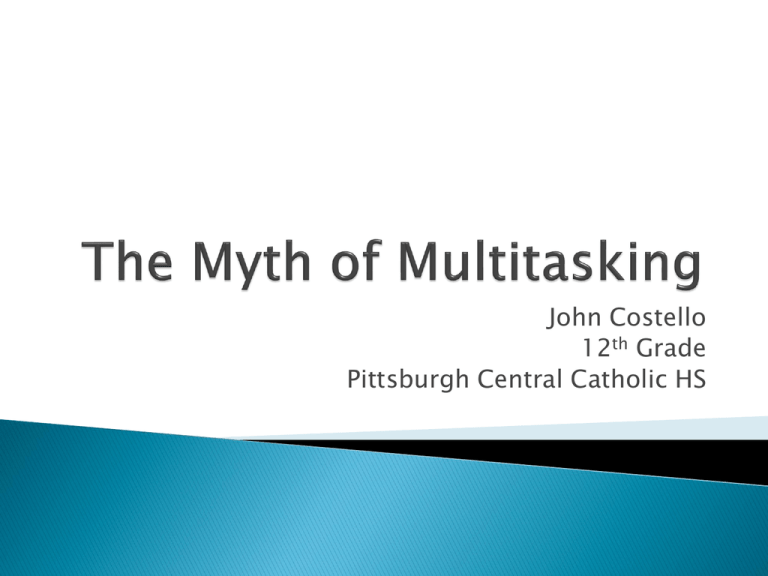
John Costello 12th Grade Pittsburgh Central Catholic HS Within the last decade, technology has given us the opportunity to perform several tasks at once. People feel compelled to take advantages of these conveniences simultaneously. In 1999, only 16% of time spent using any media involved a second form of media. By 2005, the number nearly doubled. 53% of students in grades 7-12 report consuming some other form of media while watching television 62% while using the computer 63% while listening to music “I get bored if it’s not all going on at once.” • • • • • Researchers believe that we can only focus on one thing at a time. We use executive control processes, associated with the prefrontal cortex, as well as the parietal cortex, to allocate the brain’s resources. Human prefrontal cortex – 1/3 of the entire cortex 15% in monkeys and 5% in dogs Switching from one progression of thought to another can take up to half a second. A 2005 test found that “Workers distracted by e-mail and phone calls suffer a fall in IQ more than twice that found in marijuana smokers.” A UCLA experiment found that performing additional tasks switches brain activity from the hippocampus, which stores and recalls information, to the striatum, which functions in rote memorization. The RAC Foundation, a British nonprofit, found that drivers ages 17-24 were 35% slower when writing a text message. Additionally, many studies indicate that multitasking increases secretion of stress hormones and adrenaline, which can have long term health effects. In 1990, 4.3 million Americans used cellular phones. As of October 2008, 266 million carried a cell. Similar trend in exists usage while driving. A 2005 study concluded that cell phone usage increases risk of crashing by a factor of four, and can be as dangerous as driving drunk. A 2007 survey of 1,200 dangerous drivers found that 73% used cell phones. A 2006 study showed that four-fifths of crashes involve some form of inattention. The most common cause of inattention was cell phone use. Five states have banned talking on a handheld phone while driving. Seven states have banned sending text messages while driving. To determine if talking on a cell phone will affect one’s performance in a driving simulation. Null - the phone conversation will have no significant effect on the drivers’ performances. Alternative - the phone conversation will have a significant effect on the drivers’ performances. 20male subjects (ages 14-18) Cell phone Material to record answers Play Station Portable game system with “Need for Speed” Stopwatch 1. Have subject sit in a room with limited distractions, with cell phone in pocket. 2. Ask subject a series of simple questions with short answers which can be asked over the phone; record answers. 3. Have subject play one round of the game; record score. 4. Repeat Step 3 twice, with the identical game. 5. Leave room and call subject’s cell phone. 6. Instruct subject to begin playing the game. 7. Once they have done so, ask the first question. If they answer correctly within 6 seconds, move on to the next question. If they answer incorrectly, or fail to answer within 6 seconds, record this as a 5-second penalty to be added to final score. 8. Record subject’s final score, and add the appropriate penalty, if any, to their time. SUBJECT PERCENT TRIAL 1 (LC) TRIAL 2 (LC) TRIAL 3 (sec) TRIAL 4 (sec) DIFFERENCE CHANGE 1 discarded discarded 154.1 169.9 15.8 10.253082 2 discarded discarded 152.3 231.2 78.9 51.805647 3 discarded discarded 172.3 192 19.7 01.679104 4 discarded discarded 177.5 201.3 23.8 2.689487 5 discarded discarded 179.4 175.9 -3.5 1.146497 6 discarded discarded 182 140.1 -41.9 -23.021978 7 discarded discarded 155.8 177.4 21.6 13.863928 8 discarded discarded 153.4 172.5 19.1 12.451108 9 discarded discarded 167.8 186 18.2 10.846246 10 discarded discarded 145.9 169.4 23.5 16.106923 11 discarded discarded 171.2 172.3 1.1 0.642523 12 discarded discarded 158.3 194.6 36.3 22.931143 13 discarded discarded 159.7 179.7 20 12.523482 14 discarded discarded 166.2 195.2 29 17.448857 15 discarded discarded 150.2 171 20.8 13.848202 16 discarded discarded 159.9 184.5 24.6 15.384615 17 discarded discarded 160.8 163.5 2.7 11.433546 18 discarded discarded 163.6 168 4.4 13.408451 19 discarded discarded 157 158.8 1.8 -1.950948 20 discarded discarded 152 168.3 16.3 10.723684 Average Time 180 seconds 175 170 P-value: average .001316 165 160 155 150 1 2 P-value is well below the .05 cut-off, therefore the null hypothesis can be rejected. The simulator is by no means a perfect replication of real-world driving. Time and resources did not allow for a larger sample size. Journal of Experimental Psychology: Human Perception and Performance, published by the American Psychological Association (APA). http://www.nytimes.com/2008/10/25/business/yourmoney/ 25shortcuts.html Christine Rosen, "The Myth of Multitasking," The New Atlantis, Number 20, Spring 2008, pp. 105-110. Virginia Tech Transportation Institute and the National Highway Traffic Safety Administration (NHTSA) Human Factors and Ergonomics Society Nationwide Mutual Insurance Co. http://www.iii.org/media/hottopics/insurance/cellphones/ Institute of Psychiatry at the University of London

